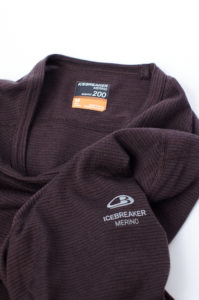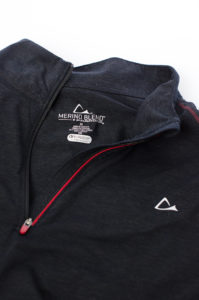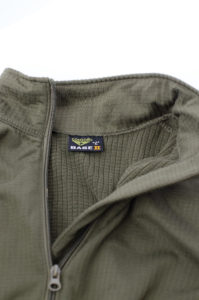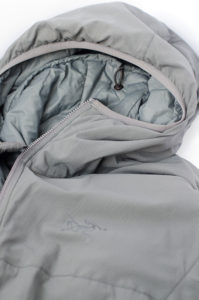Any range day is a good one. Except for this particular day.
You are having a hard time concentrating because of the bone chilling low temperatures. The frigid temperatures are only made worse by a brutally cold, sharp wind that has frozen your body to its core.
You are in a world of hurt, and you have only been on the range for 45 minutes.
You thought that you dressed properly in your 100% cotton layered clothes but you just are not staying warm.
It is going to be a long day.
We Have All Been There
You may have had a similar day in your professional career.
Now imagine the same conditions but you are trying run a training day, or worse yet your team is conducting a SWAT operation in low temperatures.
In a previous post, I discussed the dangers of being distracted because of poor equipment choice.
Getting distracted because you are cold is a classic example.
The Problem & The Solution
Two common reasons for getting cold:
- You don’t have the clothes you need.
- You don’t know how to dress for cold weather.
Dressing for cold weather is a 3-step process;
- Wear performance layers only; no cotton!
- Wear your clothes in a progression of layers that can be added or removed as needed.
- If you can, take one layer more than you think you will need.
Performance Clothing
What is cold weather performance clothing? Clothing that dries quickly when you sweat in them (‘breathes’ well) and retain heat even when they are wet from precipitation or sweat.
Staying Warm Without Going Broke
There is a lot of performance clothing that you can buy as a complete system. These systems are pricey as individual parts, never mind if you are going to buy them as a complete system in one shot.
However, it is possible to assemble a clothing system that is economical and robust enough to keep you reasonably comfortable in lower temperatures without breaking the bank.
The Layers Simplified
These are the basic layers
- Base – this is the one against your skin.
- Mid – this is an intermediate layer between your base layer and jacket.
- Outer – normally worn in dry calm conditions. Can be exposed to light wind and rain.
- Hard/Soft Shell – Usually uninsulated. Shells protect you from prolonged heavy wind and precipitation. Hard shells provide better protection.
These four layers can keep you warm down to temperatures below 32 degrees, as long as you are moving. If you are going to be static for a while then you are going to need at least a warmer mid layer.
3 Important Factors
- Movement – the more you move the warmer you’ll be, the less you move the colder you will get.
- You – we are all different, what works for me may not work for 250lb or 120lb person.
- Wind – the great equalizer. If it is cold out and there is a steady wind you are going to need a shell (handy for rain as well).
My Personal Layers
Items highlighted in blue are what I am currently using
Base Layer
I have used four different types of base layers, all effective.
- Patagonia Capilene top & bottom ($45) – They don’t make the version I own anymore, but I have been wearing it my entire career in law enforcement. It was expensive but worth every penny. I don’t use the bottoms often but when it is really cold they are my solution.
- Ice Breaker crew neck top ($30 on sale, $90 regular) 200 weight – Made of Merino wool. Expensive but I got it on sale for a steal.

- Paradox ¼ zip top ($15.99) – Dirt cheap Merino wool blended fabric that works well. I often wear it over the Ice Breaker top.

Except for the Paradox ¼ zip I have worn all of these while on patrol under my ballistic vest. They make a huge difference in low temperatures.
Mid Layer
- Polypropylene ($25) – good, but bulky. This was the first mid layer I ever bought.
- Condor Base II Gridded Fleece ($22 on sale, $44 regular) – cheap and very effective, they run small, so order one size up.

Outer Layer
- Fleece Jacket ($45) – I used to wear fleece jacket all the time before I was willing to spend money to keep warm. It kept me warm as long as there was no wind, but I would overheat quickly if I was doing any real work. No good in any kind of sustained precipitation.
- Arc’teryx LT Atom Hoodie ($260, $160-190 on sale) – This is an expensive jacket; it is also worth every penny. It uses synthetic down to keep you warm (even when it is wet). The hood is lighted insulated and designed to fit over a helmet. The jacket also has good water resistance in light precipitation. The armpits and sides of the jacket use a different material for better airflow to prevent overheating. Lastly, but critically, the Atom Hoodie is comfortable to wear underneath a plate carrier.

A Word on My Hard Shell (or lack of)
I do not have a hard shell jacket other than what has been issued to me by my agency. I am not going to mention its name because it is really not well suited to my SWAT needs.
What I will tell you is this, for the best quality hardshell, 3 layer Gore-Tex is the best of the best. Gore-Tex is also the most expensive. If Gore-Tex prices bother you, manufacturers like Mountain Hardware and Patagonia make hard shells that use proprietary materials that work like Gore-Tex but cost less.
Now I just need to wait for the hard shell I want to go on sale…
In the End
You don’t need to break the bank to stay warm in low temperatures. Spend a little money wisely for good cold weather performance clothing. You will be surprised at how much more comfortable you are at lower temperatures. You will be amazed at how fast your clothing dries out when you get a good sweat going as well.
In next weeks post I’ll put together a few cost effective cold weather layer combinations and talk about a few other odds and ends.
Remember, effective cold weather clothing is not too expensive, you just aren’t cold enough yet.
